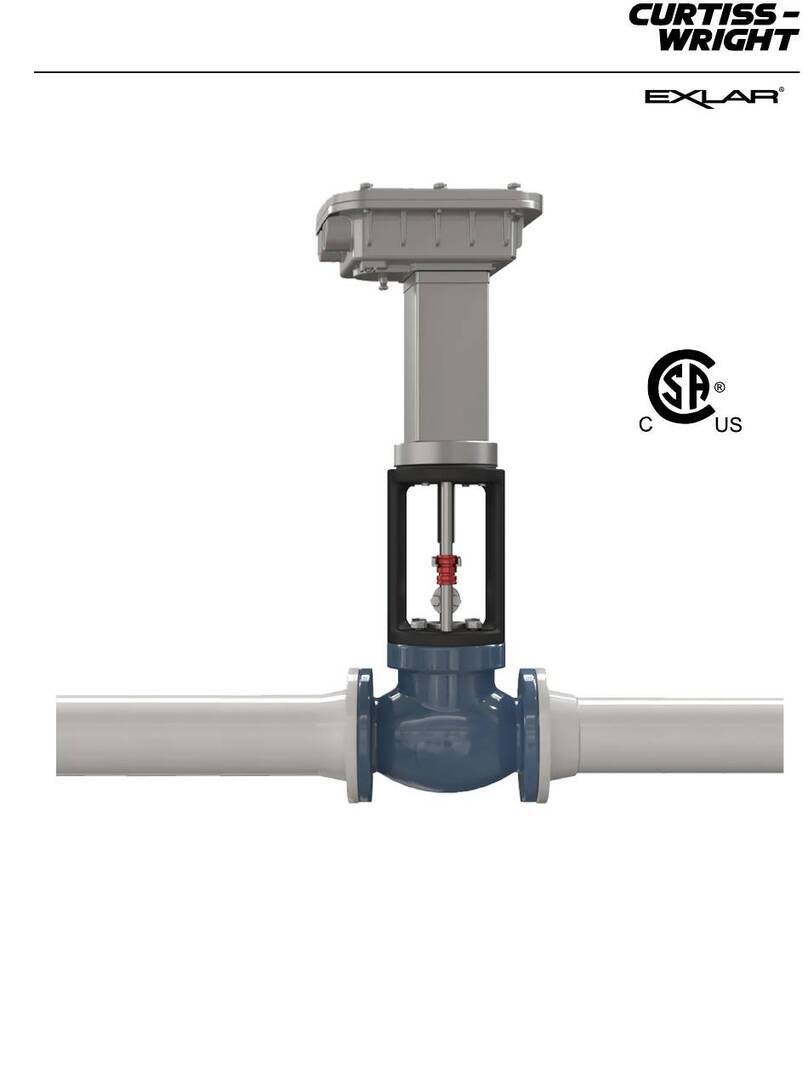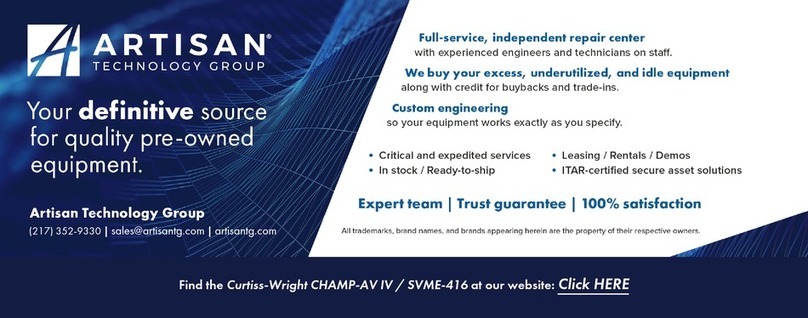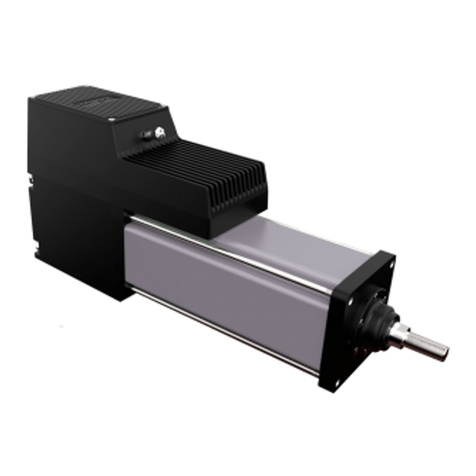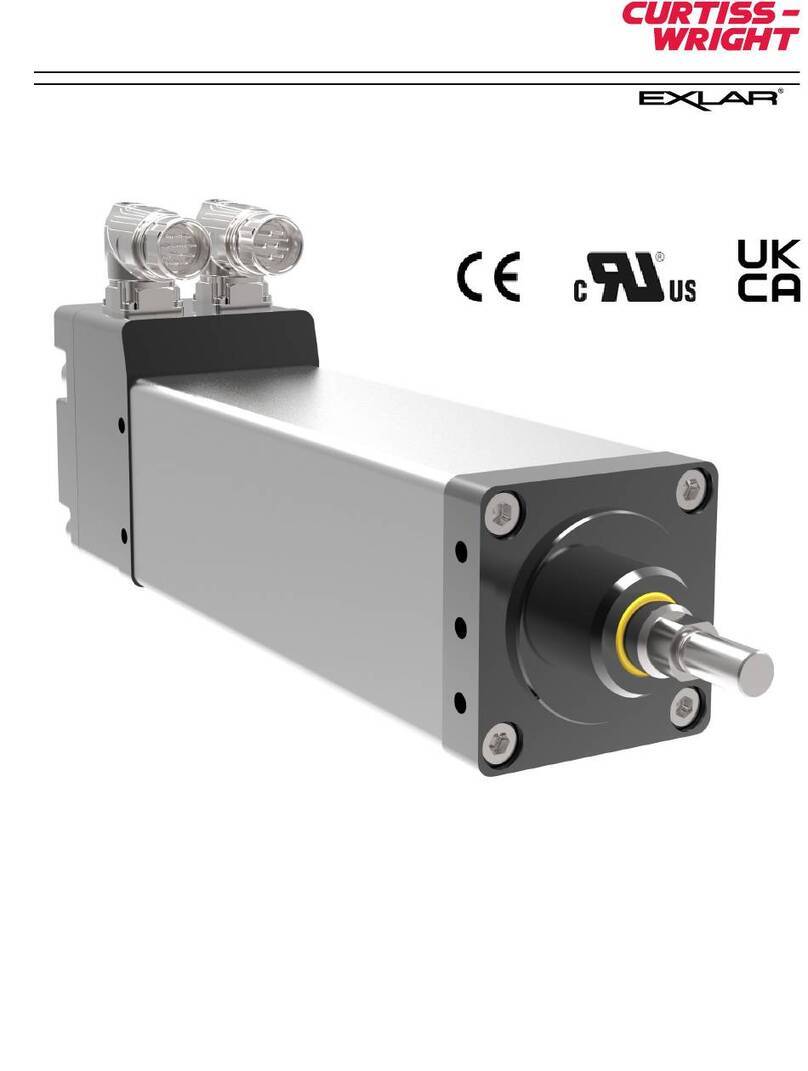1.0 INTRODUCTION
1.1 Warranty and Limitation of Liability
Products are warranted for two years from date of manufacture as determined by the
serial number on the product label. Labels are generated and applied to the product at the
time of shipment. The first and second digits are the year and the third and fourth digits
represent the manufacturing week. Product repairs are warranted for 90 days from the date
of the repair. The date of repair is recorded within Exlar’s database tracked by individual
product serial number.
Exlar Corporation warrants its product(s) to the original purchaser and in the case of
original equipment manufacturers, to their original customer to be free from defects in
material and workmanship and to be made only in accordance with Exlar's standard
published catalog specifications for the product(s) as published at the time of purchase.
Warranty or performance to any other specifications is not covered by this warranty unless
otherwise agreed to in writing by Exlar and documented as part of any and all contracts,
including but not limited to purchase orders, sales orders, order confirmations, purchase
contracts and purchase agreements. In no event shall Exlar be liable or have any
responsibility under such warranty if the product(s) has been improperly stored, installed,
used or maintained, or if Buyer has permitted any unauthorized modifications, adjustments
and/or repairs to such product(s). Seller's obligation hereunder is limited solely to repairing
or replacing (at its opinion), at the factory any product(s), or parts thereof, which prove to
Seller's satisfaction to be defective as a result of defective materials, or workmanship and
within the period of time, in accordance with the Seller's stated product warranty (see Terms
and Conditions above), provided, however, that written notice of claimed defects shall have
been given to Exlar within thirty (30) days from the date of any such defect is first
discovered. The product(s) claimed to be defective must be returned to Exlar, transportation
prepaid by Buyer, with written specification of the claimed defect. Evidence acceptable to
Exlar must be furnished that the claimed defects were not caused by misuse, abuse, or
neglect by anyone other than Exlar.
Components such as seals, wipers, bearings, brakes, bushings, gears, splines, and
roller screw parts are considered wear parts and must be inspected and serviced on a
regular basis. Any damage caused by failure to properly lubricate Exlar products and/or to
replace wear parts at appropriate times, is not covered by this warranty. Any damage due to
excessive loading is not covered by this warranty.
The use of products or components under load such that they reach the end of their
expected life is a normal characteristic of the application of mechanical products. Reaching
the end of a product’s expected life does not indicate any defect in material or workmanship
and is not covered by this warranty.
Costs for shipment of units returned to the factory for warranty repairs are the
responsibility of the owner of the product. Exlar will return ship all warranty repairs or
replacements via UPS Ground at no cost to the customer.
For international customers, Exlar will return ship warranty repairs or replacements via
UPS Expedited Service and cover the associated shipping costs. Any VAT or local country
taxes are the responsibility of the owner of the product.
The foregoing warranty is in lieu of all other warranties (except as Title), whether
expressed or implied, including without limitation, any warranty of merchantability, or of
fitness for any particular purpose, other than as expressly set forth and to the extent
specified herein, and is in lieu of all other obligations or liabilities on the part of Exlar.
Seller's maximum liability with respect to these terms and conditions and any resulting
sale, arising from any cause whatsoever, including without limitation, breach of contract or
negligence, shall not exceed the price specified herein of the product(s) giving rise to the
claim, and in no event shall Exlar be liable under this warranty otherwise for special,
incidental or consequential damages, whether similar or dissimilar, of any nature arising or
resulting from the purchase, installation, removal, repair, operation, use or breakdown of the
product(s) or any other cause whatsoever, including negligence.
The foregoing warranty shall also apply to products or parts which have been repaired or
replaced pursuant to such warranty, and within the period of time, in accordance with
Seller's stated warranty.
NO PERSON INCLUDING ANY AGENT OR REPRESENTATIVE OF EXLAR IS
AUTHORIZED TO MAKE ANY REPRESENTATION OR WARRANTY ON BEHALF OF
EXLAR CONCERNING ANY PRODUCTS MANUFACTURED BY EXLAR, EXCEPT TO
REFER PURCHASERS TO THIS WARRANTY.
































